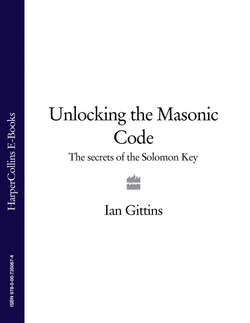Читать книгу Unlocking the Masonic Code: The Secrets of the Solomon Key - Ian Gittins - Страница 22
Deference Within Masonry?
ОглавлениеDespite Masonry’s claims to eschewing social snobbery and prejudice, it is notable that no working stonemason has ever been voted Grand Master of the Grand Lodge of England. From 1717-21 only, the position was held by gentlemen, or speculative, Masons. Thereafter, the Grand Lodge has invariably voted aristocracy or, in recent years, royalty into its top post. The first Royal Family member to be Grand Master was King George III’s brother, the Duke of Cumberland, in 1782. The current incumbent, HRH the Duke of Kent, was appointed in 1967.
respect for the rituals and traditions that had made the fraternity unique and revered. So it was that, on 24 June 1717, London’s senior Masons gathered at the Goose & Gridiron in the courtyard of St Paul’s Cathedral, whose construction had been overseen by one of their number, Sir Christopher Wren, to form the Grand Lodge of England. As their first ever Grand Master they elected a speculative or admitted Mason, Anthony Sayer from the lodge at the Crown.
The founding of the Grand Lodge of England succeeded in giving Masonry the greater cohesion it required, but paradoxically it also caused rifts within the fraternity. Long-established lodges in Scotland and the north of England did not respond favourably to the Grand Lodge’s unilateral declaration that it alone could recognize, or charter, new lodges, and that it was henceforth in regulatory charge of all existing lodges.
In 1725, northern lodges formed a rival Grand Lodge of All England at York—a body that lasted until 1790. Scotland, ever resentful of English rule, had no truck with London and formed its own completely independent Grand Lodge of St John of Scotland in 1736. Ireland, however, fell into line with the English Grand Lodge and formed its own Grand Lodge of Ireland under a charter from London.
